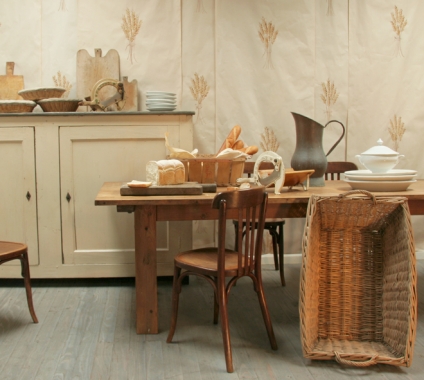Well Bread
Well Bread
There is something very essential about bread. It provides sustenance and has sparked revolutions. The simple alchemy of flour, water and yeast weaves it’s mundane magic through our daily lives providing the familiar carbohydrate that so many of us depend on.
My childhood memories of bread are fond. Our mother used to grind wheat in a small hand mill precariously attached to the laundry bench. Sometimes we would help and watch with wonder as the kernels of wheat transformed into clouds of flour and billowed into the receptacle below. Mum baked the most delicious wholemeal bread. It’s earthy scent would permeate the house as it baked and we would line up for thick slices of the warm bread as soon as it came out of the oven. Butter with honey from our stepdad’s beehive in the garden were the toppings of choice and the melting stickiness would drip through our fingers as we raced to devour the bread. The smell of baking bread still signifies home for me and comfort is reliably delivered by that heavenly pairing of toast and honey.
Bakeries have long been a vital social establishment - providing such a fundamental ingredient they became the nucleus of every village in France. They have always captivated me with their alluring selection of breads promising such deliciousness and answering such a basic need. It never ceases to amaze me that the heroic baker has been working mysterious and unimaginable hours during the night just to provide us with our daily bread. Bread making is a noble art, it is steeped in the lofty importance of the everyday. It is at once utilitarian and majestic - this is it’s unique charm, and the furniture and accoutrements associated with bakeries inevitably share a similar appeal.
On discovering a large worktable from a bakery near Marseille I was gripped by that familiar bakery - induced excitement and this stunning table promptly joined the Haunt collection. This is a remarkable table of grand proportions - measuring 3 metres in length it could host a veritable banquet. Sturdy, practical and beautiful it is destined to be the social centre of a very special home. The 19th century, directoire style cupboard behind hails from Normandy and was used in a bakery to store baking moulds and odd shaped and sized paraphernalia. This unique cupboard would be a characterful storage solution for any room. The bistro chairs scattered around the table have undoubtedly seated many café patrons over the years, buttering crusty tartines to dip into their café au laits perhaps ….

